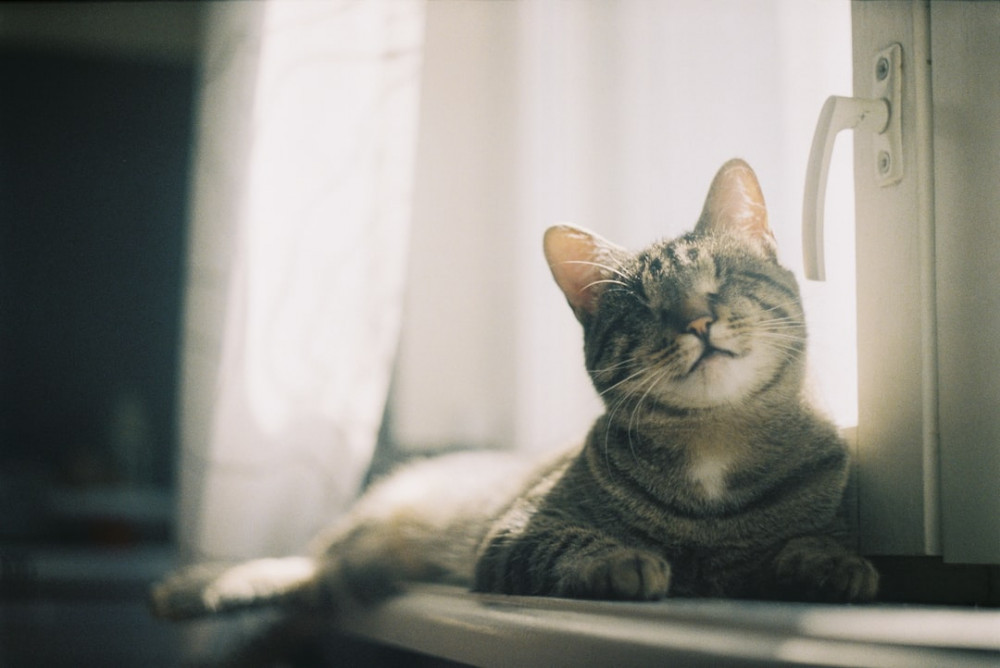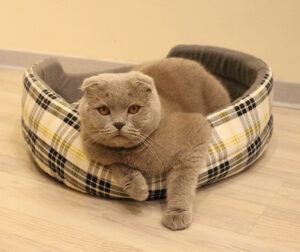
Hello, Cat Enthusiasts!
Keeping cats at home is the best way to ensure their safety. However, to keep cats not only safe but also healthy, sane and happy, it’s important to understand and provide for basic indoor cat needs.
So let’s take a look at what indoor cats need to live a full life.
Proper Nutrition and Hydration
Every cat has individual nutritional requirements which depend on many factors. To stay healthy and maintain energy balance, cats need quality nutrition that is appropriate to their age, size, breed, activity level and health condition. Cats also require a consistent and predictable feeding schedule to eat regularly and receive the right amount of food daily which is important for optimal digestion and overall well-being.
Clean water is another necessity for cats. Proper hydration is vital for maintaining a healthy fluid and electrolyte balance. Cats don’t drink much water, especially if they consume wet food but, regardless of the type of diet, all cats should have constant access to drinking water. Also, it’s very important to replace the water daily and always keep the bowls clean as cats avoid drinking stale water even if they’re thirsty. In addition, many cats prefer drinking running water over still water and might need a drinking fountain. In fact, cats are fussy about water and often require multiple drinking options to get adequate amount of water daily.
Territory, Choices and Belongings
Cats have a urge to control their territory. To feel confident and protected in the house, cats need to maintain control over several key areas and each cat needs to have certain items as its own property (even if the cat chooses to share). Choices provide an additional measure of control for cats so they should have multiple resources. Here’s how to organize key areas for cats:
Litter box areas. Cats need convenient litter boxes located in separate safe and quiet areas of the house, away from feeding area and water bowls. The number of litter box areas depends on the number of cats in the household and the size of the house. Typically, you should have one litter box per cat plus one extra box, or one litter box per story to avoid competition and ensure each of your cats can always access a litter box. The litter box area should be private but easily accessible, with a clean litter box of appropriate size (the cat should be able to easily turn around inside). The litter should be deep enough to absorb liquids and smells.
Sleeping/lounging areas. Cats can’t sleep normally unless they feel safe. They need secure and comfortable places to sleep where nobody will disturb them. Although they often choose to sleep in different places around the house, every cat should have its own bed readily available. Cat beds should be located away from drafts, in calm, warm and, if possible, elevated areas with a good view.
Scratching areas. Cats have an instinct to scratch – they scratch to stretch their bodies, sharpen their claws and mark their territory. Most cats don’t like to share one scratcher so you should have at least one scratcher per cat plus one extra scratcher. Scratchers should be located in prominent areas, near the places where cats like to rest or play.
Hiding/resting areas. Sometimes cats need to take timeout, just as we do. Hiding allows them to avoid unpleasant situations and emotionally recharge so it’s important to provide them with opportunities to retreat and get some alone time. Hiding places should be dark, warm and enclosed. In busy and multicat households, cats need multiple safe hiding spots in different locations around the house. Areas of concealment offer cats much-needed privacy and help to avoid conflicts.
Positive Social Interaction
Although cats appreciate privacy, they are very sociable beings and need love, companionship and consistent social interaction with people and animals. Human-cat social interaction depends on cats’ individual preferences and can take different shapes, such as handling, grooming, interactive play, etc. Meeting their emotional needs in a predictable way helps to avoid stress and boredom. Keep in mind, however, that cats benefit from social interaction only if it happens on their own terms.
Physical and Mental Stumulation
Stimulation is essential for cats’ physical and mental health. They require energy outlets and opportunities to perform their natural activities, such as:
Opportunity for exercise and hunt. Cats need regular short play sessions with different toys. Interactive play mimics hunt and allows cats to maintain good physical health, gives them sense of accomplishment and helps to prevent boredom.
Opportunity for exploration. Cats love novelty. To stay mentally healthy, cats need to explore new objects and to be introduced to different situations. Providing interactive toys, cat puzzles and creating a small indoor cat garden are some of the ways to feed their inquisitive nature. Another way is organizing supervised outdoor access – it offers an infinite amount of new exeriences and allows cats to safely learn about the world.
Opportunity to observe their surroundings. Cats need safe multilevel areas and perches with a good view to climb and monitor their environment. Vertical space expands a cat’s territory, provides additional exercise and helps to avoid conflicts in multicat households. Some of the simplest ways to satisfy cats’ climbing instinct are to leave empty space on a bookshelf or make a window perch.
Summary
That was an overview of essential indoor cat needs. Keeping our little tigers and panthers healthy and fully engaged at home can be tricky. However, being incredibly self-sufficient and adaptable, cats don’t require much of our effort to thrive in indoor environments, in my humble opinion.
If you have something to add or wish to share you thoughts, please leave a comment!
And if you liked this article, you might be interested as well in these articles:
The Importance of Routines for Cats
How to Socialize a 3-month-old Kitten
Thank You For Reading!
